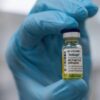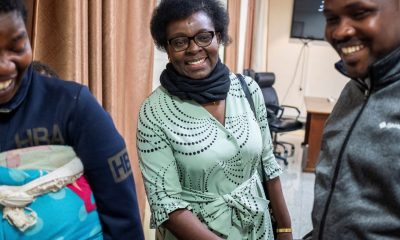Health
Benefits of an AIDS-Free generation

Qn. What is the significance of achieving the goal of enrolling as many individuals on treatment as there are new infections?
Through rapid scale up of high-impact HIV combination prevention interventions, including antiretroviral treatment (ART) and PMTCT, the global community can ultimately achieve what former U.S. Secretary of State Hillary Clinton termed “an AIDS-free generation.” One way of measuring progress toward this goal, in a country or globally, is to compare the annual number of new HIV infections with the annual increase in new patients on ART. By bringing this ratio below 1.0, through reduced infectivity and rapid treatment expansion, it is possible to achieve what is sometimes referred to as a programmatic “tipping point” in the epidemic. Patients on ART are less than 5 percent likely to transmit the virus. Thus, more people on treatment means less viral load is circulating in the population and hence fewer new infections.
Qn. What is the cost implication of this goal and how would it affect the budget for 2014/2015 that has been passed by Congress?
Getting to zero new infections will not be cheap, but the long-term benefits of investment are immense. The Uganda AIDS Commission has been leading the creation of an investment case for the national HIV response, which has modelled achievement of aggressive prevention and treatment strategies. The challenge ahead is to scale up effective combination prevention quickly enough to have a transformative impact on the epidemic and make national AIDS responses sustainable over time.
This requires strategic reallocation of existing resources toward high-impact interventions, achievement of efficiencies in all interventions, and increased and sustained investments through shared responsibility, led by countries, with support from donors such as the U.S. Government and other partners. While the upfront costs associated with such scale up are substantial, these investments do not result in ever-increasing costs. In fact, as has been illustrated by exhaustive “modelling” conducted by PEPFAR using estimates for Uganda’s current epidemic, the impact of these upfront investments leads to a decline and then flattening of per-year costs, as fewer new services are required and the number of newly infected individuals falls substantially. Strong country ownership and optimized investments can put countries on the path toward an AIDS-free generation, and support efforts to make their AIDS responses more economically-sustainable over time.
Qn. What is the time-frame for achieving this goal?
PEPFAR, working with the Government of Uganda and other international partners and donors, reached this tipping point in 2013. However, it should be noted that a country can reach the tipping point and then cross back-returning to a situation in which the number of new HIV infections is higher than the number of patients on ART. There are financial limitations to putting everyone who is HIV positive on ART. That’s why it is essential to achieve optimal coverage rates of high-impact combination prevention interventions including voluntary medical male circumcision for HIV prevention, correct and consistent use of condoms, and prevention of mother-to-child transmission strategies to ensure that we bring the number of new infections down. And, of course, the pace at which treatment and prevention are scaled up is key. In order to keep Uganda beyond the tipping point, governments and donors must work together to increase financial and human resource commitments to strategic combination prevention investments and continue to increase the number of Ugandans receiving ART.
Qn. Has the government of Uganda committed to raising part of the funds towards achieving this goal and how much?
I would refer you to the Ministry of Health or Uganda AIDS Commission for information about the Government of Uganda’s commitment to funding. However, I can tell you that the U.S. government, through the President’s Emergency Plan for AIDS Relief (PEPFAR), funds 78% of the national response to HIV/AIDS in Uganda.
As the single largest bilateral donor to Uganda, the U.S. government is concerned that the Government of Uganda continues to reduce the proportion of its national budget allocated to health away from its “Abuja Declaration” commitment to allocate 15% of the budget to health. In addition, serious gaps in staffing across health facilities make achieving PEPFAR-supported scale-up of HIV/AIDS services difficult. We therefore urge the Government of Uganda to renew its leadership and stewardship of the HIV/AIDS response-which was very strong in the early days but which has unfortunately weakened over time with a corresponding rise in national HIV prevalence.
Qn. What is your target in terms of actual numbers for SMC in Uganda and what is the time-frame for this goal?
In Uganda, the overall unmet need for SMC among eligible males over age 15 is 4.3 million, and Uganda’s national target for SMC, according to the National Prevention Strategy, is 1 million per year. Since the beginning of Uganda’s SMC program in 2010, PEPFAR has supported approximately 1.6 million procedures. PEPFAR is the only national partner supporting the SMC program in Uganda. For 2013-2014 alone, PEPFAR’s contribution to Uganda’s national SMC targets was in excess of 750,000.
Comments


















